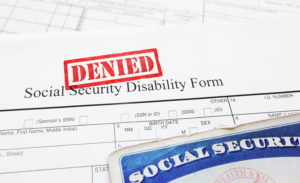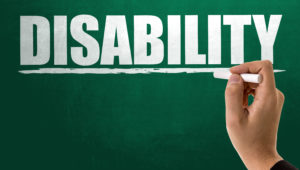An experienced disability lawyer representing you early in the SSD application process will help build a strong case for your entitlement to benefits from the onset and help answer all your questions as you navigate the process.
How Long Does It Take to Get Social Security Disability Benefits in 2023?
The timeline for processing an SSD application ranges between three to six months, depending on the availability of medical records and the applicants’ timely completion of necessary forms.
If you have been denied disability, you’ll need to file an appeal through a Request for Reconsideration and a Request for a Hearing before an administrative law judge. That process can take an additional six to 18 months. It may take less time if you agree to a hearing by telephone. However, it’s questionable whether you will get the best result by selecting that option.
When Should I Apply for Social Security Disability Benefits?
The answer to that question varies depending on whom you ask. Due to the lengthy process, many disability advocates suggest applying for benefits as soon as possible. In my practice, however, I consider each case individually before recommending when you should apply. Several factors play into my decision-making process, including how long you have been out of work due to your condition(s)
- The conditions are keeping you from being able to work.
- Your age and the type of work you have performed.
- The length and frequency of your medical treatment and the type of providers where you receive treatment.
The answers to these questions determine the right time to apply for benefits. For example, Social Security guidelines consider how long you have been out of work and how long you will be out of work if your condition is terminal. So, preparing a case and filing an application at the appropriate time can increase your chance of a favorable outcome.
If I’m working part-time, can I apply for disability benefits and get approved?
If you are 18 or over, the first step to Social Security’s evaluation of your SSDI application is to determine your work activity. For example, if you engage in substantial gainful activity (SGA), you are not considered disabled under Social Security’s guidelines. Engaging in SGA means you are working and earning wages of $1,470.00 or more before taxes. As a result, even if you have a severe health problem but continue to work at SGA, you will not be able to collect Social Security Disability benefits.
You may be eligible if you work part-time and earn less than SGA. However, having consistent, part-time work may result in Social Security denying your SSDI application unless you have documentation from a medical doctor addressing why you cannot work full-time.
How Much Will I Receive Monthly if I Am Awarded SSDI Benefits?
The amount you will receive per month varies depending on what you have paid into the program through your wages over the years. If you set up an SSA.gov account, you can see the monthly amount you would be entitled to if found disabled. A person’s maximum benefit per month in 2023 is $3,627.00.
How Much Will I Receive Monthly if Awarded Supplemental Security Income (SSI)?
SSI is a disability program available to individuals who have not worked or paid into the Social Security Program. To be considered for this program, you must have less than $2,000.00 in assets.
The maximum monthly amount you can receive for an individual in 2023 is $914.00. The maximum for couples is $1,371.00. However, the monthly amount you receive may be reduced if you receive assistance from family or friends, including free room and board.
If My SSDI Application is Approved, When Do the Payments Begin?
After filing an SSDI application and being awarded benefits, those benefits begin five months after your disability date. For example, if SSA determines you became disabled as of January 1, 2023, your benefits will start on June 1, 2023.
SSI payments begin the first full month after your disability date. So, if SSA determines you became disabled as of January 1, 2023, your benefits will start on February 1, 2023.
Both programs provide for payment of back-due benefits depending on the date you filed your application. SSDI will pay back-due benefits up to 12 months before the filing date. SSI will pay back due benefits to the first month after the date of filing.
Are SSDI and SSI Benefits Taxable?
SSDI benefits are considered taxable. Generally, the IRS will tax SSDI income over a certain threshold. The threshold is $25,000 in these instances:
- Single
- Head of household
- Married and filing separately (not living with a spouse)
- Qualifying widower
If you are filing married and jointly, the threshold is $32,000.00. The threshold is zero if you are married and filing separately but lived with your spouse during the tax year.
SSI benefits are not taxable.
Do I Need a Disability Lawyer to File an SSDI Application?
No, there is no requirement for you to be represented by an attorney in the SSDI application process.
However, an attorney’s assistance may be helpful even at the initial application stage. An experienced disability attorney will be able to answer your questions as you go through the process. In addition, they can assist in completing the application and the required forms after applying.
We can assist you with obtaining, reviewing, and interpreting your medical records. We can also determine whether the documents are sufficient to support a favorable decision on your claim for disability.




